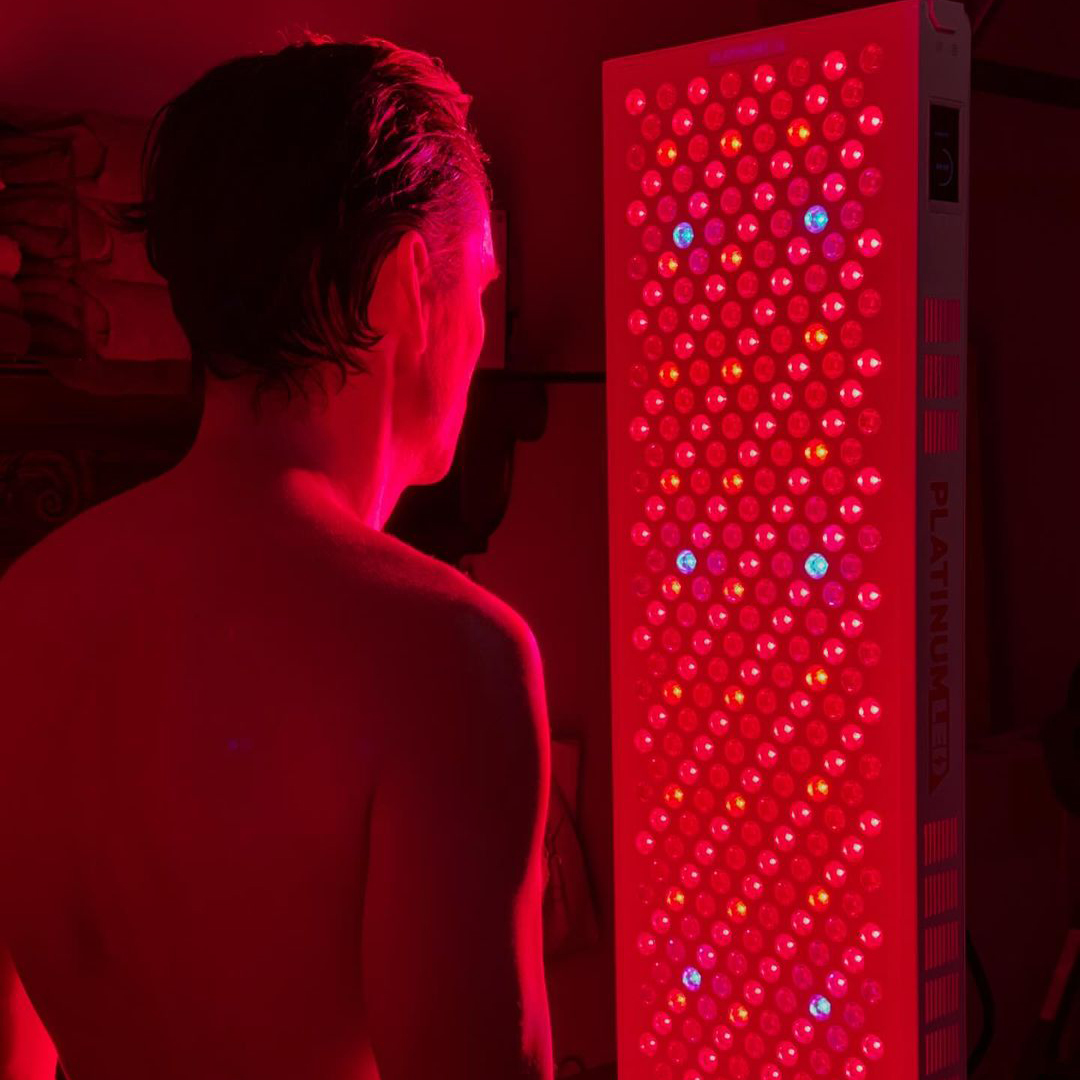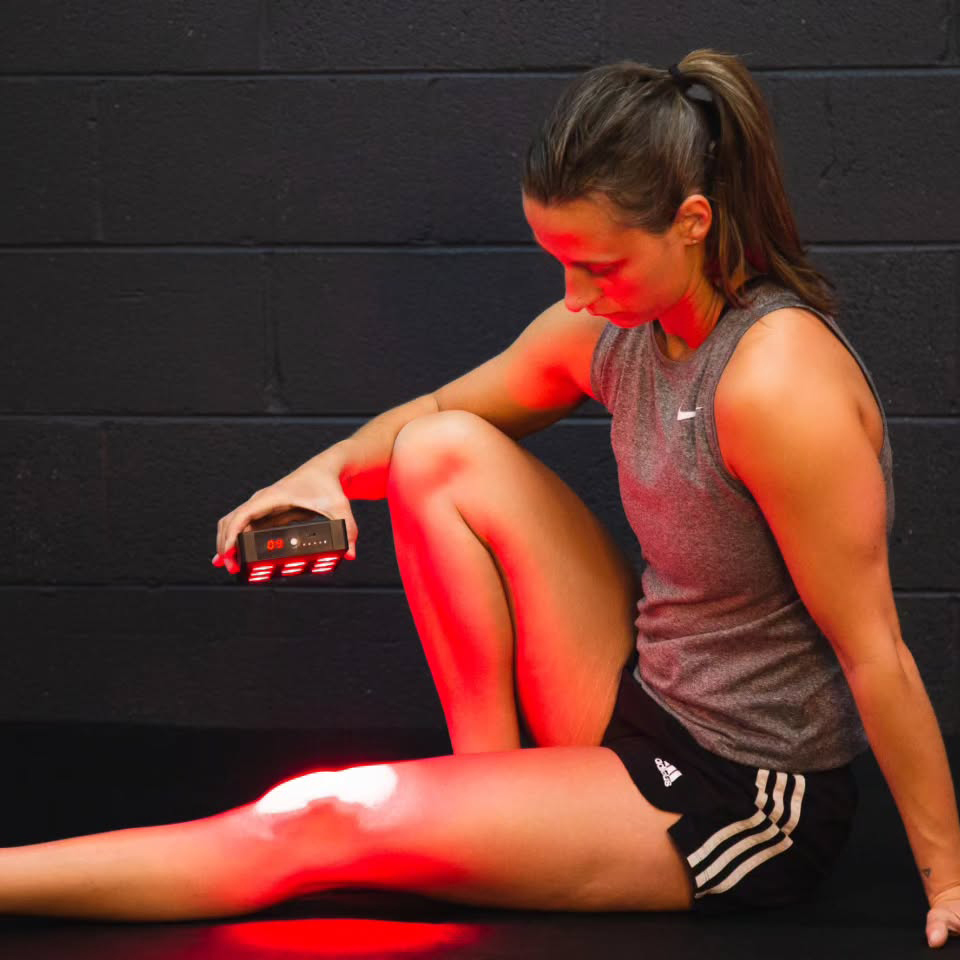![]() Free Shipping
Free Shipping ![]() Buy Now, Pay Later
Buy Now, Pay Later ![]() Eligible
Eligible
How Red Light Therapy Can Help Banish Actinic Keratoses

Introduction
Actinic keratoses (AKs) are rough, scaly patches on the skin caused by years of sun exposure. They are considered precancerous, meaning they can develop into squamous cell carcinoma if left untreated. Traditional treatments include cryotherapy (freezing), topical medications, chemical peels, and even surgical removal. However, these methods can be painful, cause scarring, or require lengthy recovery times.
Enter red light therapy (RLT)—a non-invasive, painless treatment that uses low-wavelength red light to stimulate cellular repair and reduce inflammation. Emerging research suggests that RLT may help manage and even banish actinic keratoses by promoting skin healing and reducing abnormal cell growth.
In this article, we’ll explore:
- What actinic keratoses are and why they develop
- How red light therapy works on a cellular level
- Scientific evidence supporting RLT for AKs
- How to use red light therapy for actinic keratoses
- Comparing RLT to traditional treatments
- Safety considerations and best practices
By the end, you’ll understand whether red light therapy could be a viable option for treating actinic keratoses—without the side effects of conventional methods.
What Are Actinic Keratoses?
Actinic keratoses (AKs), also called solar keratoses, are dry, scaly, or crusty patches that develop on sun-exposed skin, such as the face, ears, scalp, neck, forearms, and hands. They result from cumulative UV damage over time, which causes mutations in keratinocytes (skin cells).
Key Characteristics of AKs:
- Texture: Rough, sandpaper-like, or wart-like
- Color: Pink, red, brown, or skin-toned
- Size: Range from a tiny speck to over an inch in diameter
- Symptoms: Itching, burning, or tenderness (though some are asymptomatic)
Why Treat Actinic Keratoses?
While not all AKs turn cancerous, about 5-10% progress to squamous cell carcinoma (SCC) within 10 years. Early treatment reduces this risk.
How Red Light Therapy Works for Skin Repair
Red light therapy (RLT), also known as low-level laser therapy (LLLT) or photobiomodulation (PBM), uses wavelengths between 630-700 nm to penetrate the skin and stimulate cellular energy production.
Mechanisms of Action:
- Boosts Mitochondrial Function
- Red light is absorbed by cytochrome c oxidase in mitochondria, enhancing ATP (energy) production.
- This accelerates cell repair and regeneration.
- Reduces Inflammation
- RLT decreases pro-inflammatory cytokines, helping calm irritated skin.
- Promotes Collagen & Elastin Production
- Enhances fibroblast activity, improving skin texture and reducing scarring.
- Encourages Healthy Cell Turnover
- Helps normalize keratinocyte proliferation, potentially reducing AK lesions.
VELLGUS Elite V2
THE #1 RATED RED LIGHT DEVICE
VELLGUS pro V2
THE #1 RATED FULL BODY RED LIGHT DEVICE
Scientific Evidence: Can RLT Help with Actinic Keratoses?
While more clinical trials are needed, several studies suggest RLT may help manage AKs:
1. Study on Photodynamic Therapy (PDT) + Red Light
- PDT (a treatment combining light and a photosensitizing agent) is already FDA-approved for AKs.
- Red light (around 630 nm) is often used in PDT because it penetrates deeply without damaging surrounding tissue.
- A 2017 study in JAMA Dermatology found that PDT with red light effectively cleared AKs with minimal side effects.
2. Anti-Inflammatory & Wound-Healing Effects
- A 2020 study in Photobiomodulation, Photomedicine, and Laser Surgery showed that RLT reduces oxidative stress and inflammation, key factors in AK development.
3. Case Reports on RLT for Precancerous Lesions
- Some dermatologists report success using RLT alongside other treatments to reduce AK recurrence.
While RLT alone may not fully eradicate AKs, it appears to support skin healing, reduce inflammation, and enhance conventional treatments.
How to Use Red Light Therapy for Actinic Keratoses
1. Professional vs. At-Home Devices
- In-Clinic RLT: Dermatologists may use medical-grade devices (e.g., Omnilux, Healite).
- At-Home Panels/Devices: FDA-cleared devices like Joovv, Rouge, or Mito Red Light can be used for maintenance.
2. Recommended Protocol
- Wavelength: 630-660 nm (ideal for skin penetration).
- Duration: 10-20 minutes per session, 3-5 times per week.
- Consistency: May take 8-12 weeks to see improvements.
3. Combining RLT with Other Treatments
- Topical Treatments: Apply imiquimod or 5-fluorouracil (5-FU) after RLT for enhanced absorption.
- Moisturizers: Use hyaluronic acid or ceramides to support skin barrier repair.
RLT vs. Traditional AK Treatments: Pros & Cons
| Treatment | Pros | Cons |
|---|---|---|
| Red Light Therapy | Non-invasive, painless, no downtime | Slower results, may need combination therapy |
| Cryotherapy | Quick, effective for single lesions | Painful, can cause blistering/scarring |
| Topical Creams | Non-surgical, treats multiple AKs | Skin irritation, redness, peeling |
| Photodynamic Therapy (PDT) | High clearance rates | Expensive, requires photosensitizer, sun avoidance |
Best For:
- RLT: Patients seeking gentle, long-term maintenance.
- Cryotherapy/PDT: Those needing fast lesion removal.
Safety & Side Effects of RLT for AKs
RLT is generally safe with minimal risks:
- Mild redness or dryness (rare).
- No UV exposure (unlike sunlight or tanning beds).
Contraindications:
- Active skin cancer (RLT should not replace conventional cancer treatments).
- Photosensitizing medications (check with a doctor).
Conclusion: Is RLT Worth Trying for Actinic Keratoses?
Red light therapy shows promise in reducing inflammation, promoting skin repair, and possibly preventing AK progression. While it may not replace cryotherapy or PDT, it can be an excellent adjunct therapy for those seeking a non-invasive, pain-free approach.
Final Recommendations:
✔ Use RLT consistently (3-5x weekly for best results).
✔ Combine with dermatologist-recommended treatments for faster clearance.
✔ Protect skin from further UV damage to prevent new AKs.
If you’re exploring red light therapy for actinic keratoses, consult a dermatologist to create a personalized treatment plan. With patience and the right approach, RLT could help you achieve healthier, lesion-free skin—without the side effects of traditional methods.
Have you tried red light therapy for actinic keratoses? Share your experience in the comments!
References:
- JAMA Dermatology (2017) – PDT for AKs
- Photobiomodulation, Photomedicine, and Laser Surgery (2020) – Anti-inflammatory effects of RLT
- American Academy of Dermatology – AK treatment guidelines









